This poster was presented as Poster #467 at the Sixth International
Conference on Functional Mapping of the Human Mapping
(HBM2000) held in
San Antonio, Texas, U.S.A., June 12-16, 2000.
| |
| |
COORDINATE SYSTEMS FOR CONFORMAL CEREBELLAR
FLAT MAPS
1Monica K. Hurdal,
2Ken Stephenson,
1Philip L. Bowers,
1De Witt L. Sumners,
3,4David A. Rottenberg
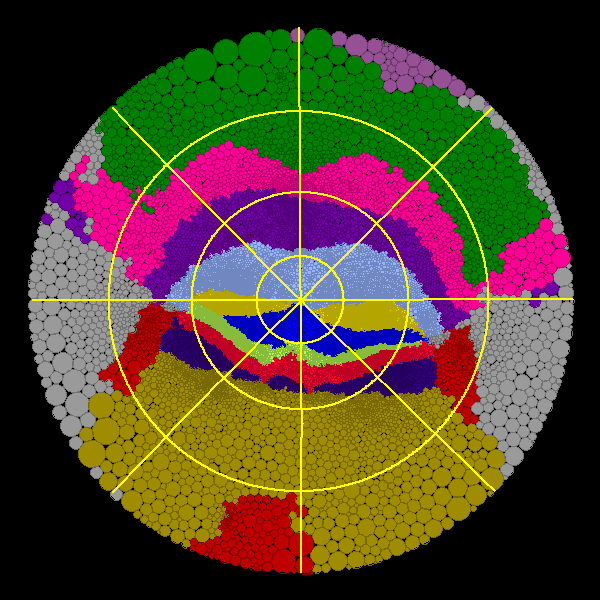 |
1Department of Mathematics,
Florida State University, Tallahassee, FL, U.S.A.
2Department of Mathematics, University of
Tennessee, Knoxville, TN, U.S.A.
3PET Imaging Center, VA Medical Center,
Minneapolis, MN, U.S.A.
4Departments of Neurology and Radiology,
University of Minnesota, Minneapolis, MN, U.S.A.
1,2,3,4Members of the International Neuroimaging
Consortium
|



|
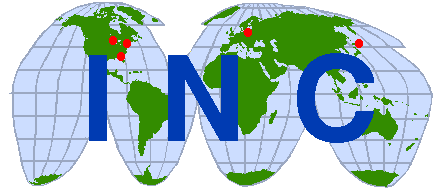
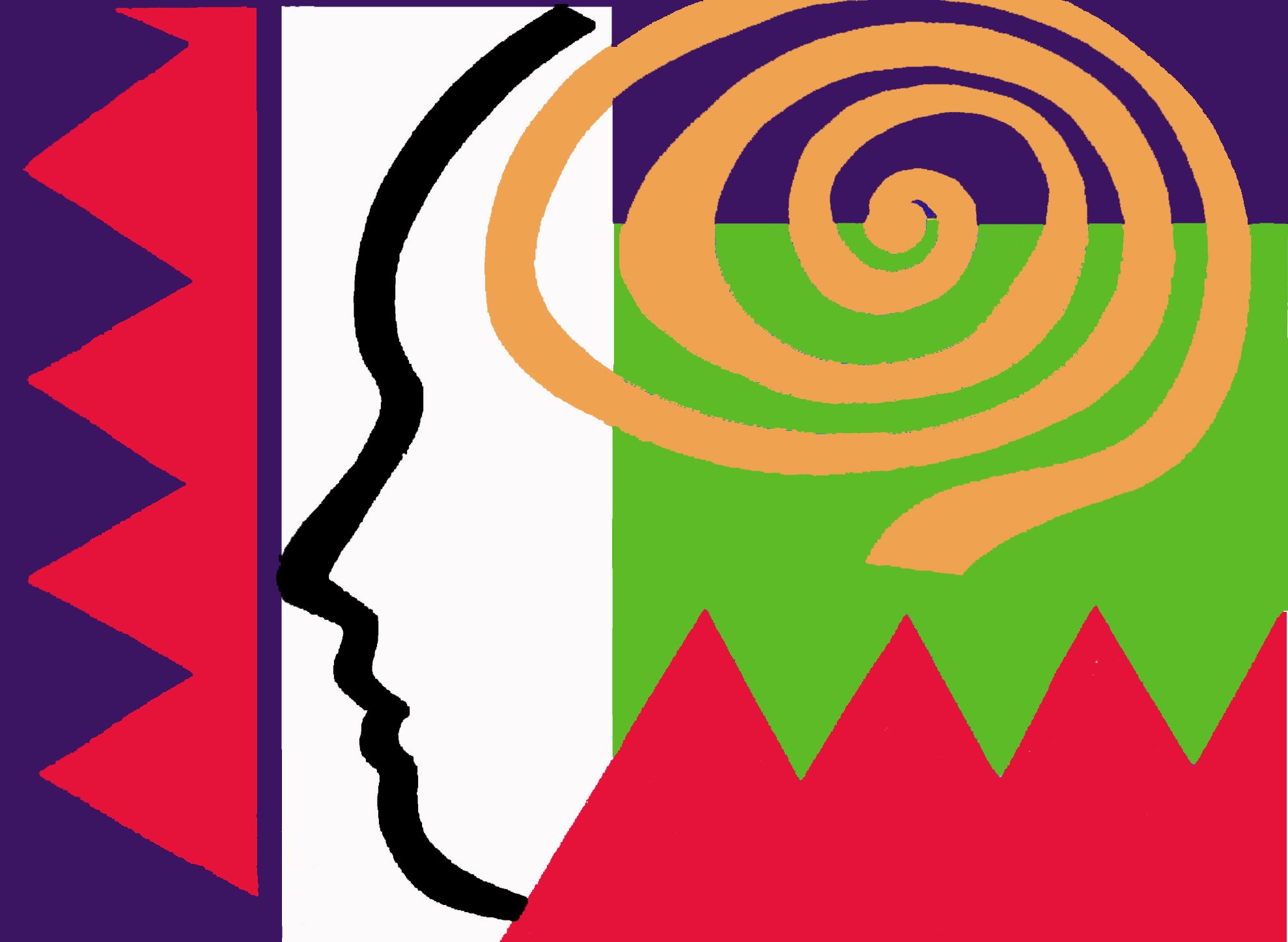
|
|
|
| |
|
| |
| |
Abstract
- we generate quasi-conformal Euclidean, hyperbolic and spherical
flat maps of the human cerebellum via circle packings
- canonical surface-based coordinate systems can be imposed on these
flat maps by specifying landmarks: 2 for hyperbolic coordinates, 3 for
spherical coordinates
We describe the use of anatomical landmarks for
imposing canonical coordinate systems on cerebellar flat maps.
|
|
| |
|
| |
| |
Surface Flattening
- it is impossible to flatten a curved 3D surface without introducing
linear and areal distortion [1]
- the Riemann Mapping Theorem (1854) says it is possible to preserve
conformal (angular) information: a surface can
be flattened without introducing angular distortion
[2]
- we generate quasi-conformal flat maps of the human cerebellum using
circle packings [3, 4,
5]
|
|
| |
|
| |
| |
Riemann Mapping
Theorem (1854)
If D is any simply-connected open set on a surface, with a
distinguished point a an element of D and a specified
direction (tangent vector)
through a, then there is a UNIQUE conformal
map (1-1 bijection) which takes D to the interior of
the unit circle O in the plane, with a --> 0 and the specified
direction point in the positive X direction [2].
**CONFORMAL MAPPINGS EXIST**
|
|
| |
|
| |
| |
Circle Packings
- a configuration of circles with a specified pattern of tangencies
is a circle packing
- a simple-connected planar triangulated surface can be represented with circles: each vertex is the center of a circle and if 2 vertices form an edge then their circles must be tangent to each other (Figure
1).
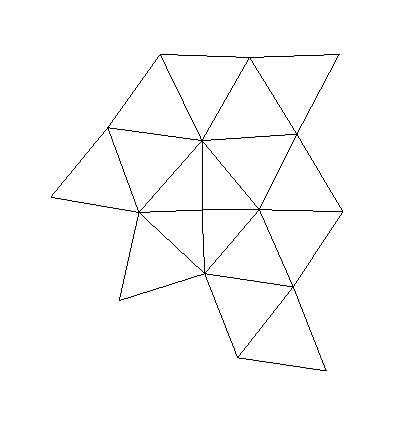
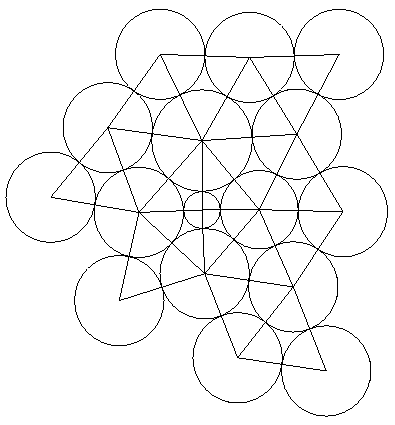
Figure 1: A planar triangulation and its corresponding
circle packing.
|
|
| |
|
| |
| |
- the Circle Packing Theorem and the Ring Lemma [6]
guarantee that a there is a unique circle packing
in the plane (up to certain transformations)
which is quasi-conformal (bounded
amount of angular distortion) for a simply-connected triangulated surface
- we have developed software [5,
7] which computes the circle packing of a simply-connected
triangulated surface in 3D
- flat maps can be created in the conventional Euclidean plane, in the hyperbolic plane and on a sphere
|
|
| |
|
| |
| |
Hyperbolic Flat
Maps
- to our Euclidean eyes, portions of the hyperbolic map near the origin
have little distortion and regions near the map border are greatly distorted
(Figure 2)
- it is possible to move the focus of the hyperbolic map to change
the regions which are in focus
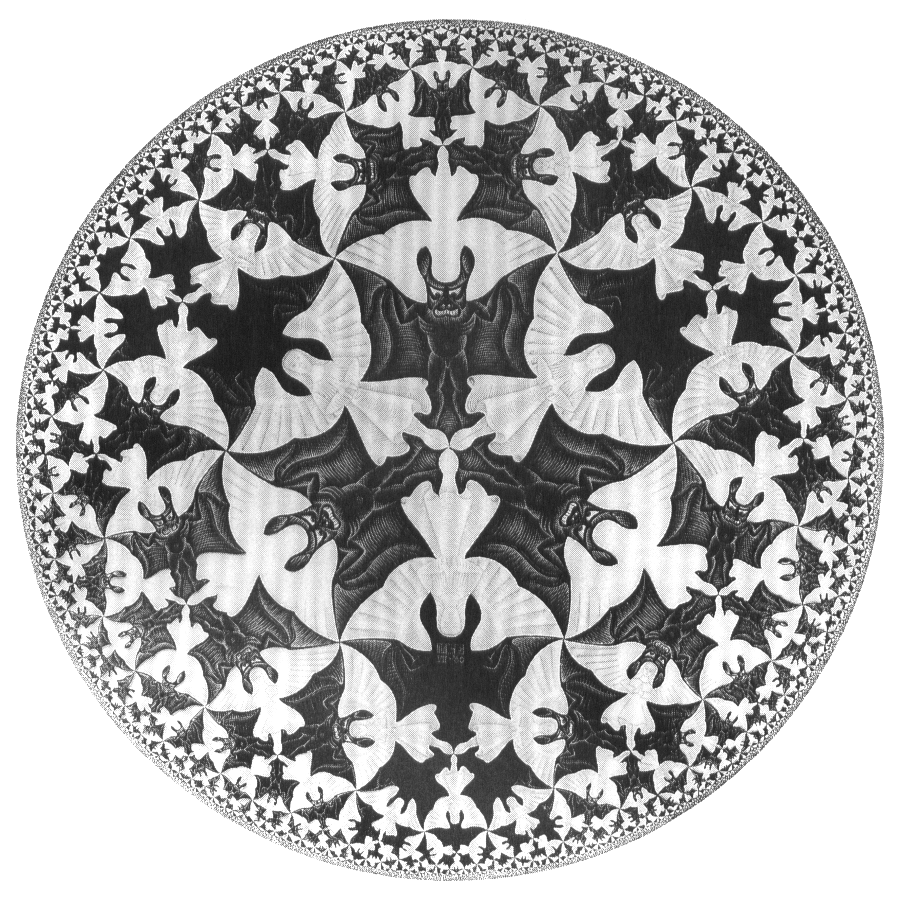
Figure 2: Planar representation of the hyperbolic
plane [8]. Each devil is the same hyperbolic area. Since
we look at this map with Euclidean eyes, regions near the boundary of the
hyperbolic map appear greatly distorted.
|
|
| |
|
| |
| |
Cerebellar Flat
Maps
- interested in describing activated cerebellar foci in functional
neuroimaging
- a high resolution T1-weighted MRI volume [9]
was used to extract a cerebellar volume defined by a plane parallel to the
posterior commisure-obex line and orthogonal to a plane passing through the
vermal midline
- a topologically correct triangulated surface of the cerebellum was produced from this cerebellar volume
|
|
| |
|
| |
| |
- functional data obtained from a target interception experiment
(Figure 3)
- various lobes and fissures color coded for identification purposes
[10] (Figure 4)
- circle packing [7] was used to create
quasi-conformal flat maps of the cerebellum (Figures 5,
6)
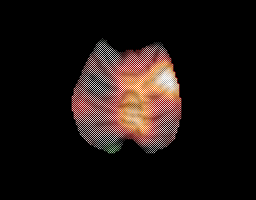
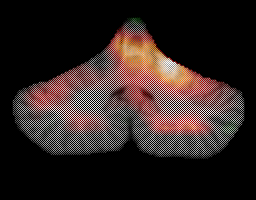
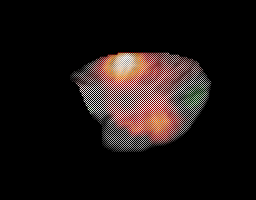 Figure 3: Axial (left), coronal
(middle) and sagittal (right) images showing PET functional activation of the
cerebellum from a target interception task.
Figure 3: Axial (left), coronal
(middle) and sagittal (right) images showing PET functional activation of the
cerebellum from a target interception task. |
|
| |
|
| |
| |
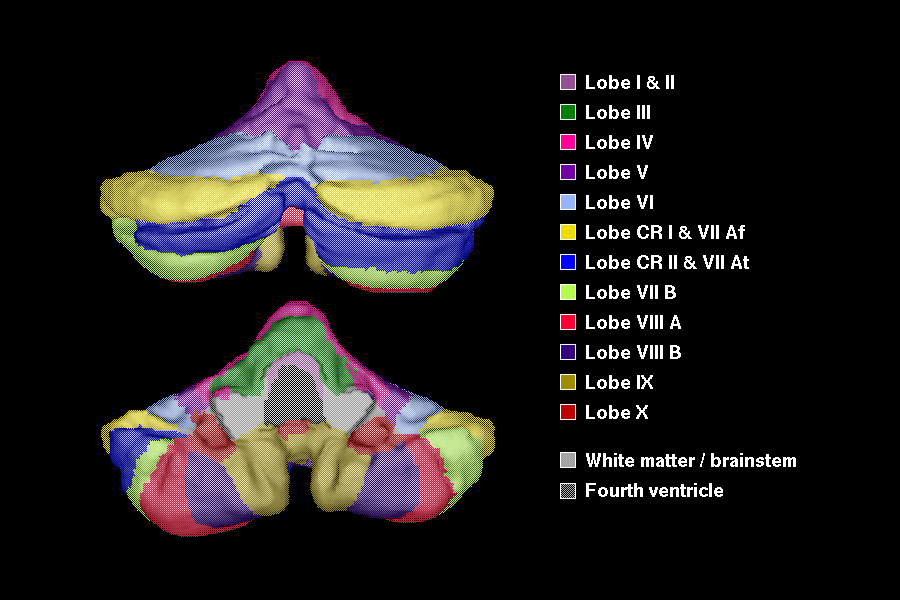
Figure 4: Surface of the cerebellum as viewed from
the posterior (top) and anterior (bottom). The surface was colored according
to the cerebellar atlas produced by [6].
|
|
| |
|
| |
| |
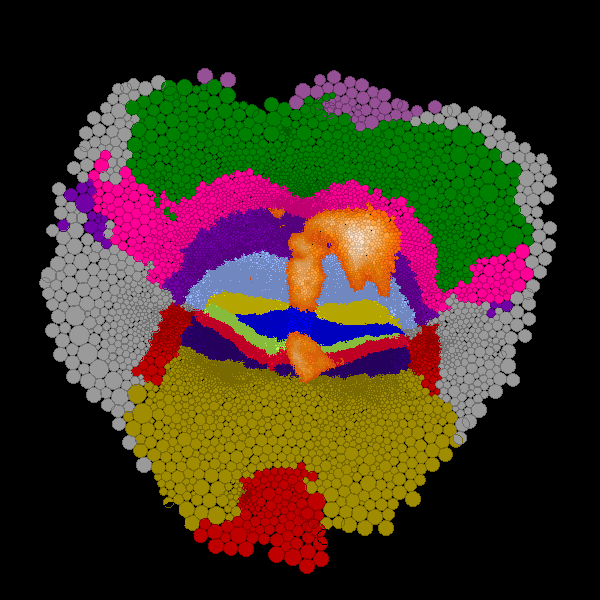
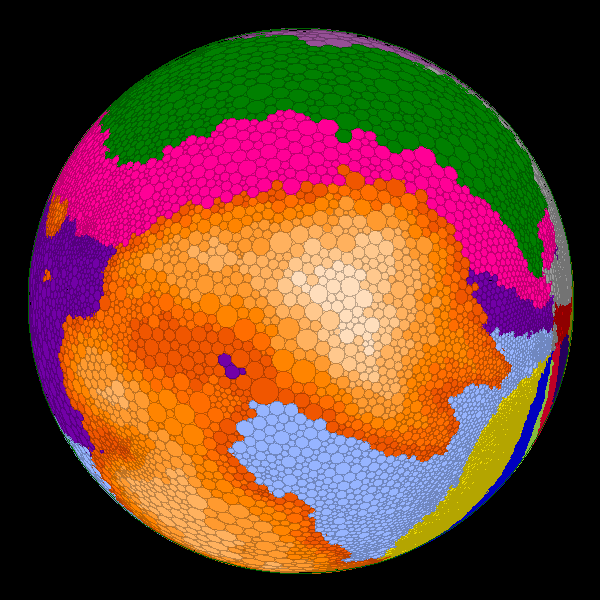
Figure 5: Quasi-conformal Euclidean flat map (left)
and spherical map (right) of the cerebellum. The orange colors correspond to
functional activation shown in Figure 3. Other colors
correspond to regions shown in 4.
|
|
| |
|
| |
| |
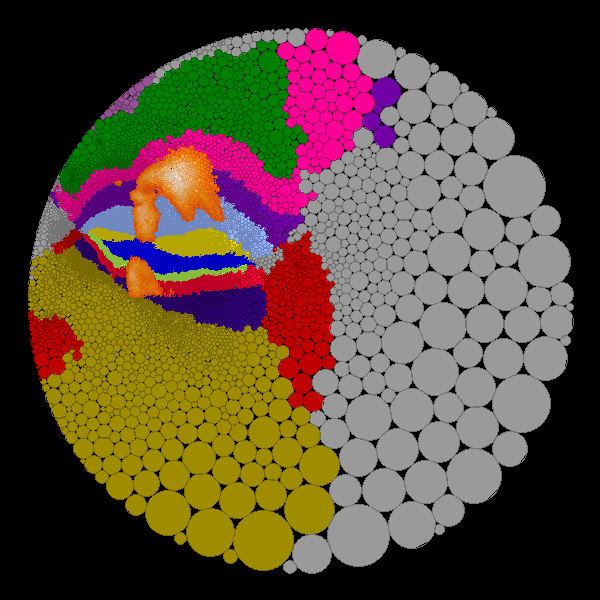
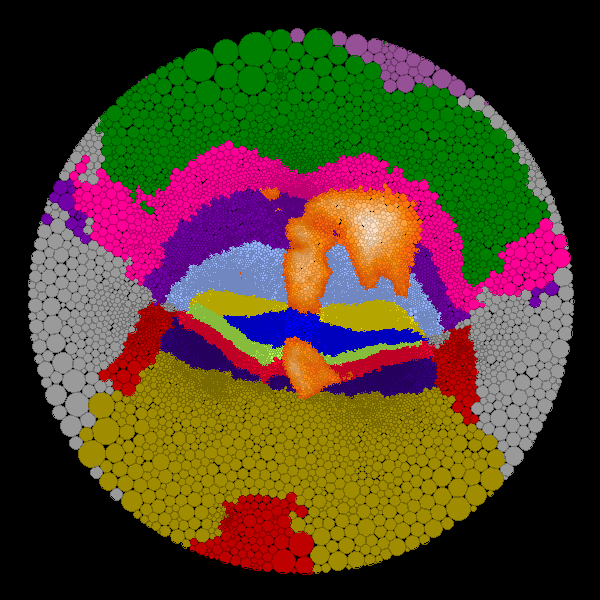
Figure 6: Quasi-conformal hyperbolic flat maps of the cerebellum. The orange colors correspond to functional activation shown in
Figure 3. Other colors correspond to regions shown in
Figure 4. The origin of the map can be altered to change
the map focus to a region of interest. In this manner, regions of interest can
be moved to the map center where there is little and other regions can be moved
to map edges where distortion is higher.
|
|
| |
|
| |
| |
A Canonical
Coordinate System
- a canonical surface-based coordinate system can be imposed by
specifying 2 points (such as anatomical or functional landmarks) on the
hyperbolic map or 3 points on the spherical map [2,
11]
- 11 anatomical landmarks were identified (see poster on "Use of
Cerebellar Landmarks ..." by Rehm et al.)
- we think flat maps with a canonical coord. system based on
reproducible landmarks will improve functional localization
|
|
| |
|
| |
| |
Hyperbolic Map
Coordinate System
- two landmarks required for a canonical coordinate system: 1) midline
base of horizontal fissure was used as the map center; 2) midline base of
primary fissure was used to specify map orientation (i.e. positive
y-axis)
- use a polar coordinate system (Figure 7,
8)
- map transformations are accomplished by Möbius transformations
[11, 12]: f(z) = (a*z+b)/(c*z+d) where
a,b,c,d are fixed complex numbers and a*d-b*c != 0
|
|
| |
|
| |
| |

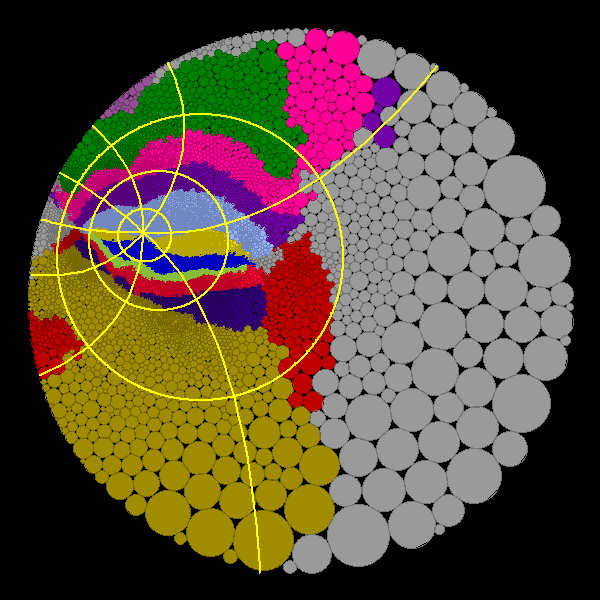
Figure 7: Two landmarks are required for a hyperbolic
coordinate system. The figure on the right shows how the coordinate system is
transformed when the map focus is changed. In this example, the coordinate
system is merely transformed and not altered. Alternatively, a new coordinate
system could be defined around the new map origin if desired.
|
|
| |
|
| |
| |
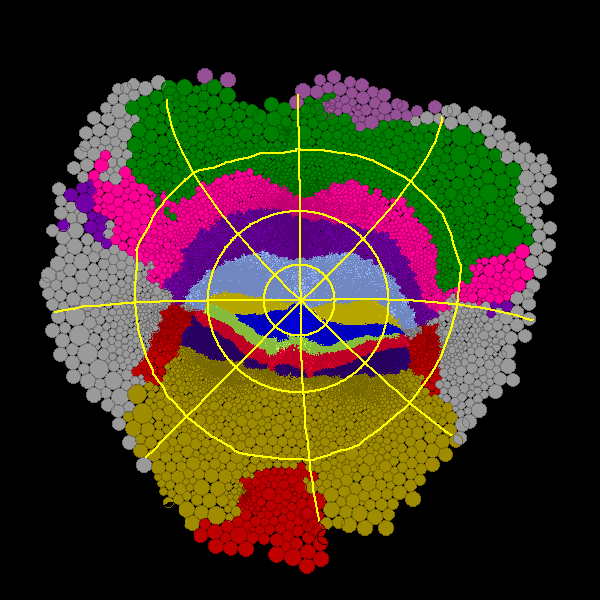
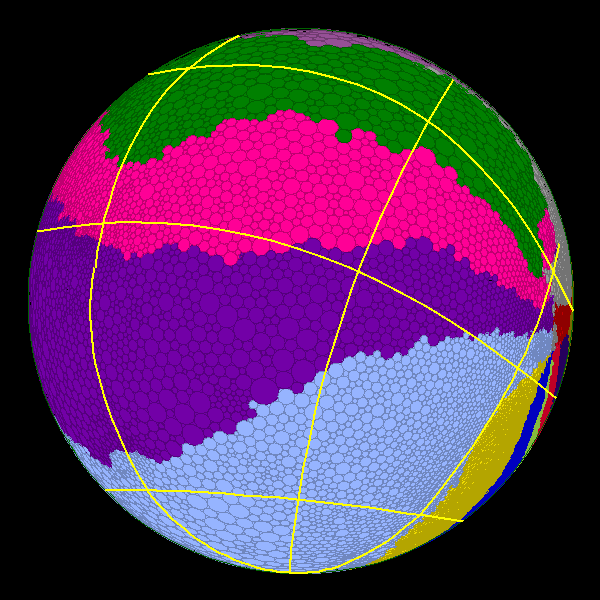
Figure 8: The coordinate lines from the hyperbolic
map in Figure 7 as they appear on the Euclidean (left) and
spherical maps (right).
|
|
| |
|
| |
| |
Spherical Map
Coordinate System
- three landmarks required for a canonical coordinate system: 1)
midline base of precentral fissure was used as the north pole; 2) midline
base of horizontal fissure was used as the south pole; 3) midline base of
primary fissure was used as an equatorial point
- use a latitude and longitude coordinate system
- poles can be interactively changed to alter map distortion as with
the hyperbolic maps
|
|
| |
|
| |
| |
Advantages and
Benefits
- conformal mappings preserve angle proportion and are mathematically
unique
- a unique canonical surface coordinate system can be installed
by choosing 2 points on a hyperbolic map or 3 points on a spherical map
- no extraneous cuts required on cortical surface to enhance
flattening
- hyperbolic and spherical conformal maps allow the map focus and
distortion to be transformed and changed
|
|
| |
|
| |
| |
For more
information...
- see our reprint: "Quasi-Conformally
Flat Mapping the Human Cerebellum" in Lecture Notes in Computer
Science, Springer-Verlag, Berlin, vol. 1679, pp. 279-286, 1999.
- contact: Dr. Monica K. Hurdal, Department of
Mathematics, Florida State University, Tallahassee, FL., U.S.A., 32306-4510.
Phone: (+1-850) 644-7378;
Email: mhurdal@math.fsu.edu;
WWW:
http://www.math.fsu.edu/~mhurdal or visit the International
Neuroimaging Consortium page
(
http://pet.med.va.gov:8080/incweb/). This
work has been supported in part by NIH grants MH57180 and NS33718. The
authors would like to gratefully acknowledge Kelly Rehm, Kirt Schaper and
Josh Stern, VA Medical Center, Minneapolis, U.S.A. for providing some of the
data used in this presentation.
|
|
| |
|
| |
| |
References
[1] Polya, G., Mathematical Discovery, Volume 2,
John Wiley & Sons, New York, 1968.
[2] Ahlfors, L.V., Complex Analysis, McGraw-Hill
Book Company, New York, 1996.
[3] Hurdal, M.K., et al., Neuroimage, 1999,
9:S194.
[4] Hurdal, M.K., et al., Lecture Notes in
Computer Science, 1999, 1679:279-286.
[5] See http://www.math.fsu.edu/~mhurdal for examples and information
on software availability.
[6] Rodin, B., Sullivan, D., J. Differential
Geometry, 1987, 26:349-360.
[7] Dubejko, T., Stephenson, K., Experimental Mathematics, 1995, 4:307-348.
[8] Schattschneider, D., Visions of Symmetry,
Notebooks, Periodic Drawings and Related Work of M.C. Escher, 1990.
[9] Holmes, C.J., Hoge, R., Collins, L.,
Evans, A.C., Neuroimage, 1996, 3:S28.
[10] Schmahmann, J.D., et al., Neuroimage,
1999, 10:233-260.
[11] Beardon, A.F., The Geometry of Discrete
Groups, Springer-Verlag, 1983.
[12] Bedford, T., et al. (eds), Ergodic
Theory, Symbolic Dynamics and Hyperbolic Spaces, Oxford University Press,
New York, 1991.
|
|
| |
|



















